Outdoor Wind Activities
The best wind activities are those that take children outdoors and let them experience it. Children can learn a lot about windy weather as they watch its effect on objects such as swings, flags, pinwheels, and more.
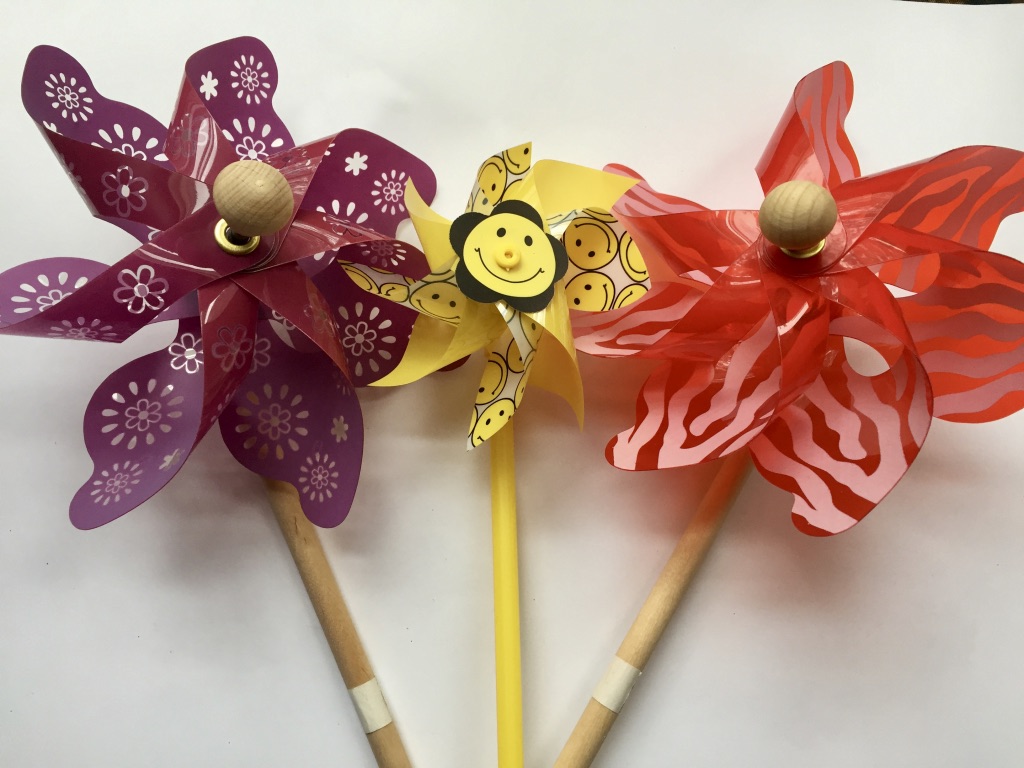
Before the Walk
Activities to Build Background
We began preparing for our walk during morning meeting when I asked, “What is wind?” Answers included gas, atoms, molecules, h2o, precipitation, and it comes from clouds. I could see how they were drawing from their learning and vocabulary of our previous studies of precipitation and matter to answer this question. Yet no one mentioned “air!”
To help them discover the answer, I posed a problem. I showed them a pinwheel and told them how disappointed I was that it wasn’t spinning. They quickly told me that I needed wind and it would only work outside.
Then one child said, “I can make that move!”
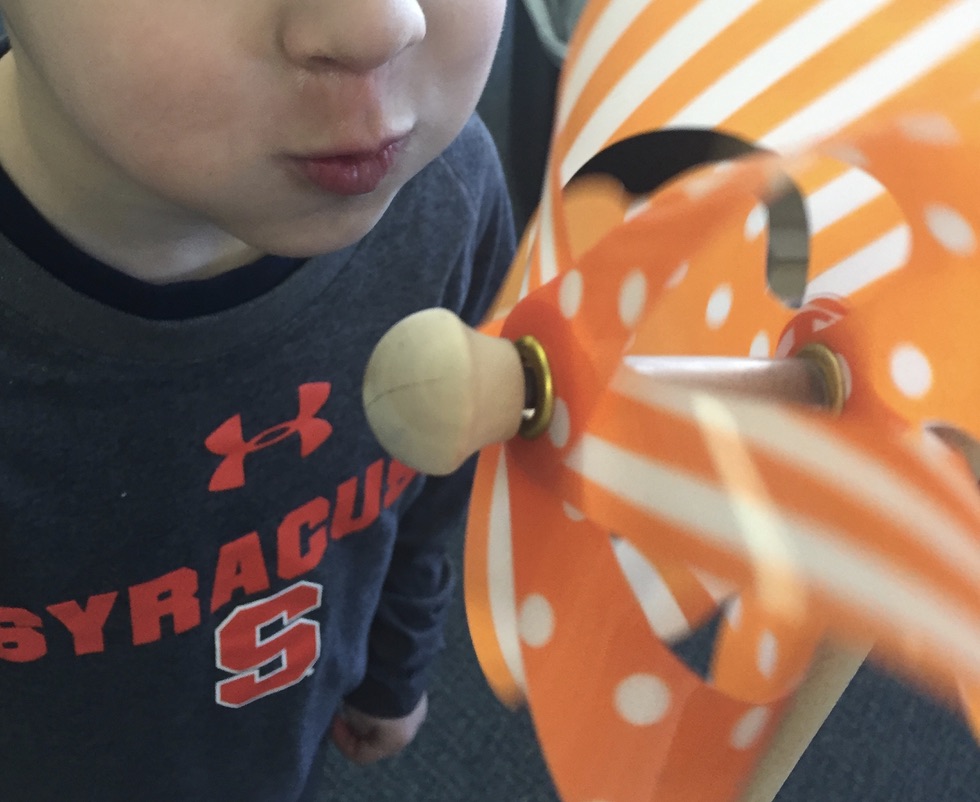
We explored what happened when he blew on the pinwheel and the word “air” then became part of the conversation.
I asked, “Is there always air?” and then, “Is there always wind?” so children could see that wind is not just air, but moving air.
Just as we were about to wrap up the conversation, someone offered, “I can make that pinwheel move a different way!” This made me curious!

He quickly grabbed a white board and began fanning it! They never cease to amaze me!
Introducing the Question
Later in the day I asked the question that would become the focus of our walk, “How can I tell if the wind is blowing? Can I see wind?” Many responses led to a discussion of how the wind feels. They thought you couldn’t see it, but could feel it, and struggled to give me words to describe it.
I then asked, “What if I’m indoors, how can I tell if the wind is blowing?” They began naming things the wind moves and we created a list of things that we might see the wind moving on our school grounds.
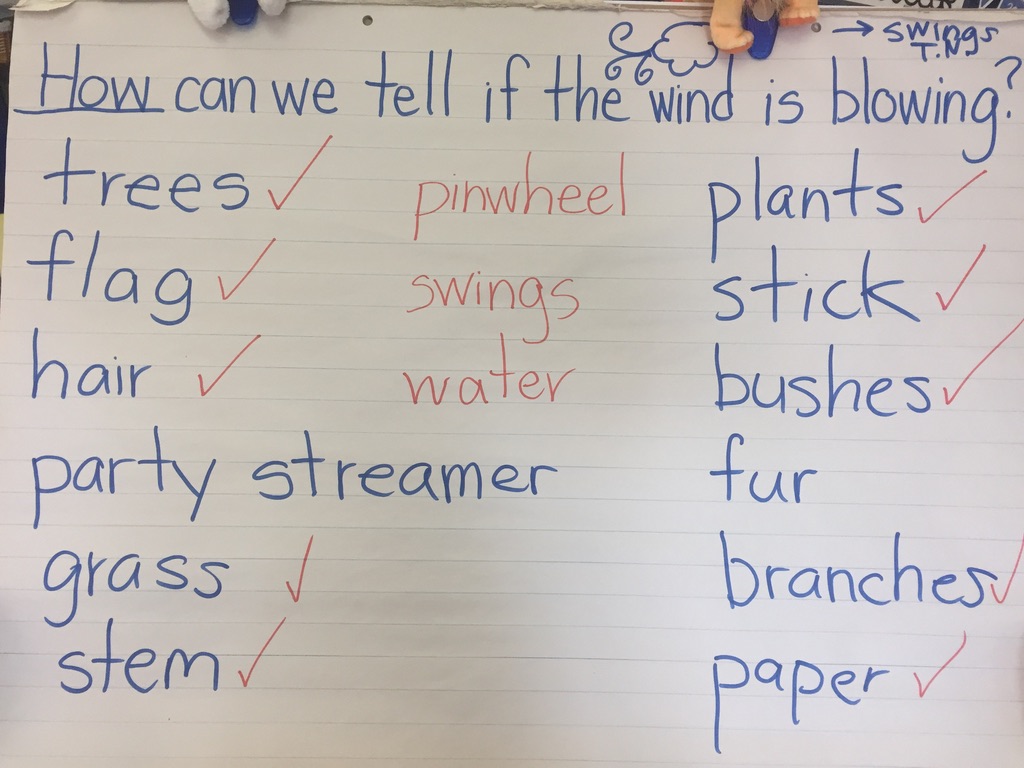
During the Walk
As we prepared to go outside for our walk, children grabbed their coats, clipboards, pencils and these field notes.
I reminded them of the focus of our walk – to find evidence of wind by observing the objects it was moving. One child made a connection to a previous walk and said, “Remember when my paper blew away on our winter walk? That was the wind!”
Once outdoors, we walked along the path that circles our school. At four points along the way, I invited them to “stop and jot,” and record a quick sketch of their observations.

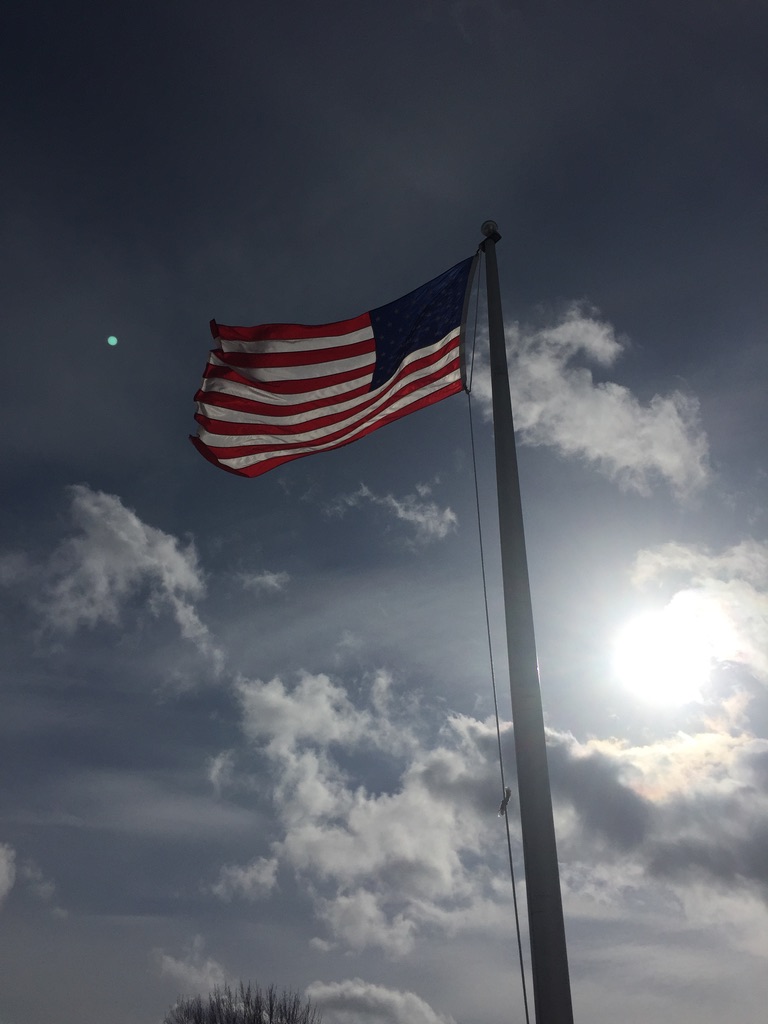

After the Walk
Back in the classroom, children shared the evidence they had found. We went back to our list and checked off the things we saw and added others that were not listed.
They each chose 4 “evidences” of wind and created a Wind Walk book to share with families.
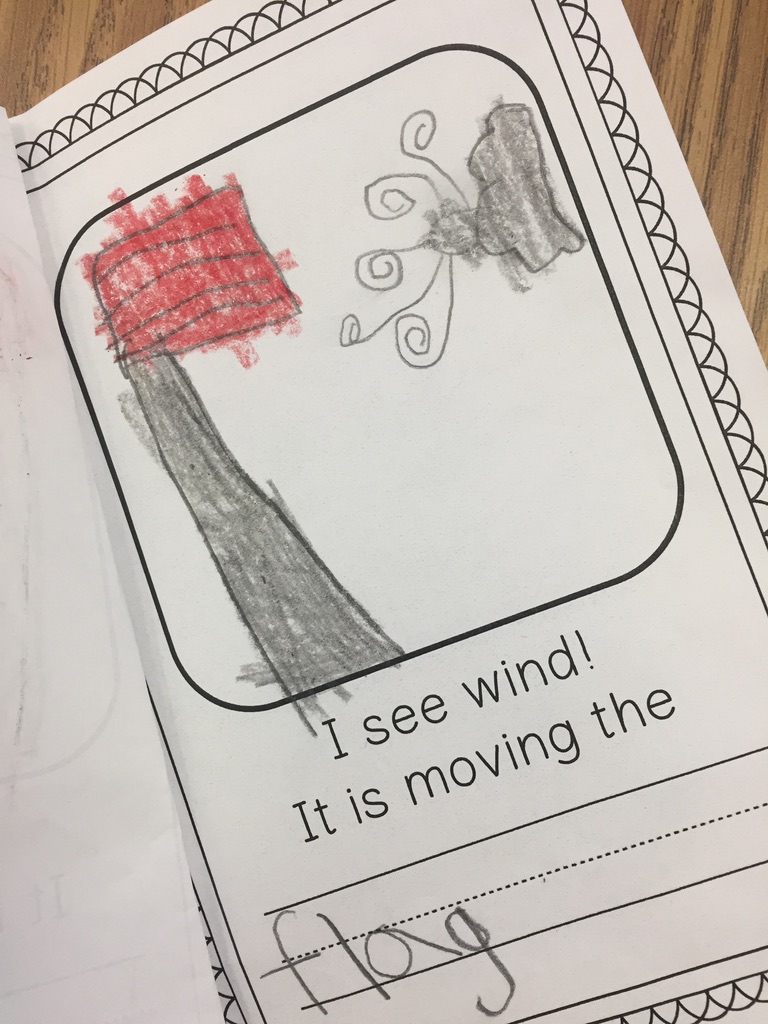
More Wind Activities to Try
Measuring the Wind
To extend the learning into our everyday experiences, I asked children how we might use the pinwheel to measure the wind. They knew it had something to do with how fast it was moving. I suggested some vocabulary that we could use to describe the wind each day: strong wind, some wind, no wind at all.
I then invited children to bring in pinwheels and/or flags to create a “wind garden” outside our classroom window. We used this “garden” to measure the wind each day for the next month and recorded the number of windy days on a graph that was part of our classroom Weather Station.
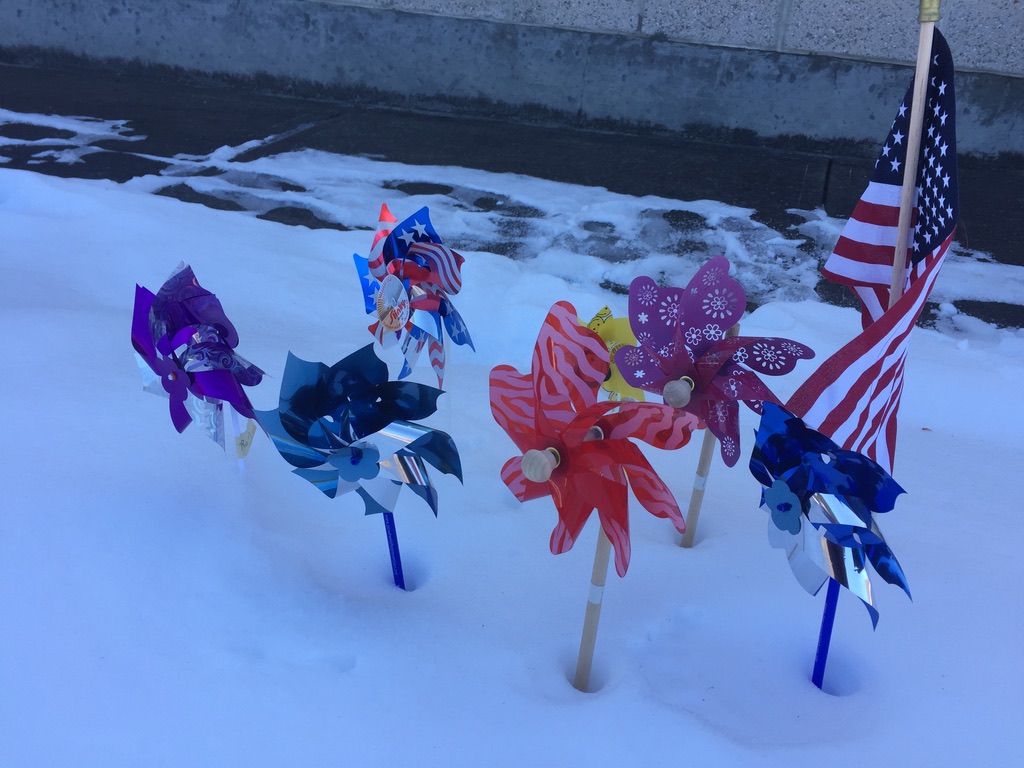
We also made windsocks to take home, so we could measure the wind there too! Steps for these cool rainbow windsocks can be found on Kinder Craze’s blog.
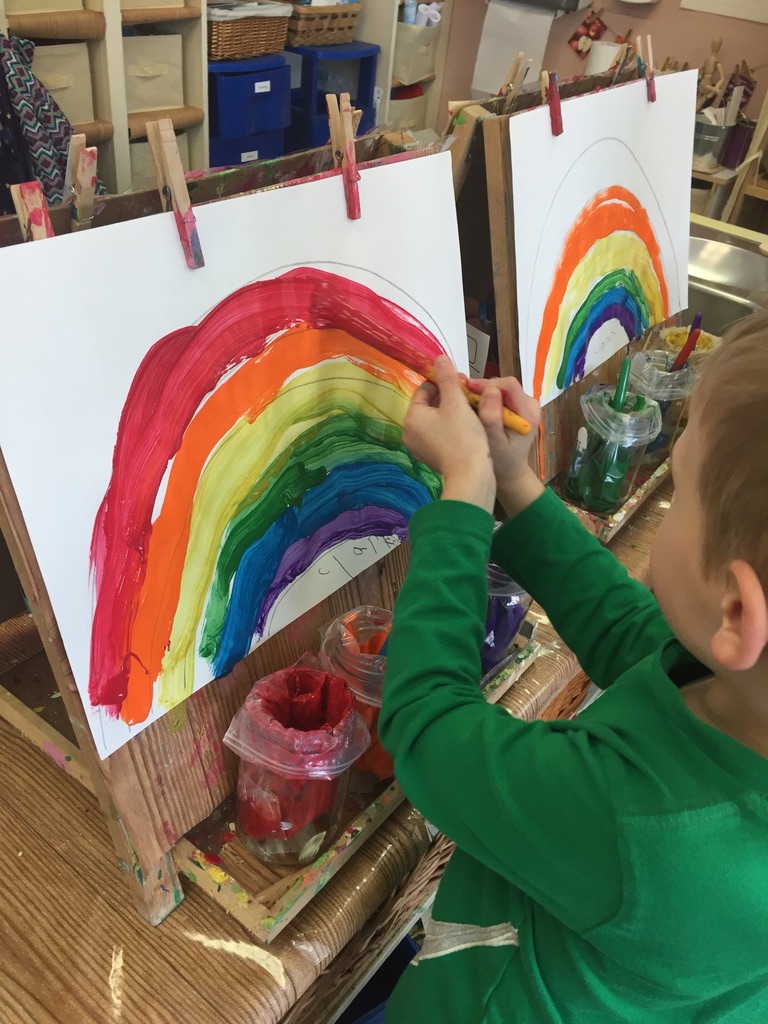
Pinwheel Vs. Windmill
Lastly, there was confusion about the term “windmill” and “pinwheel” and children were using the words interchangeably. We did a little research to learn more about windmills using the book, The Boy Who Harnessed the Wind and How it Works: Windmills.

Then, we compared the two and recorded their similarities and differences.
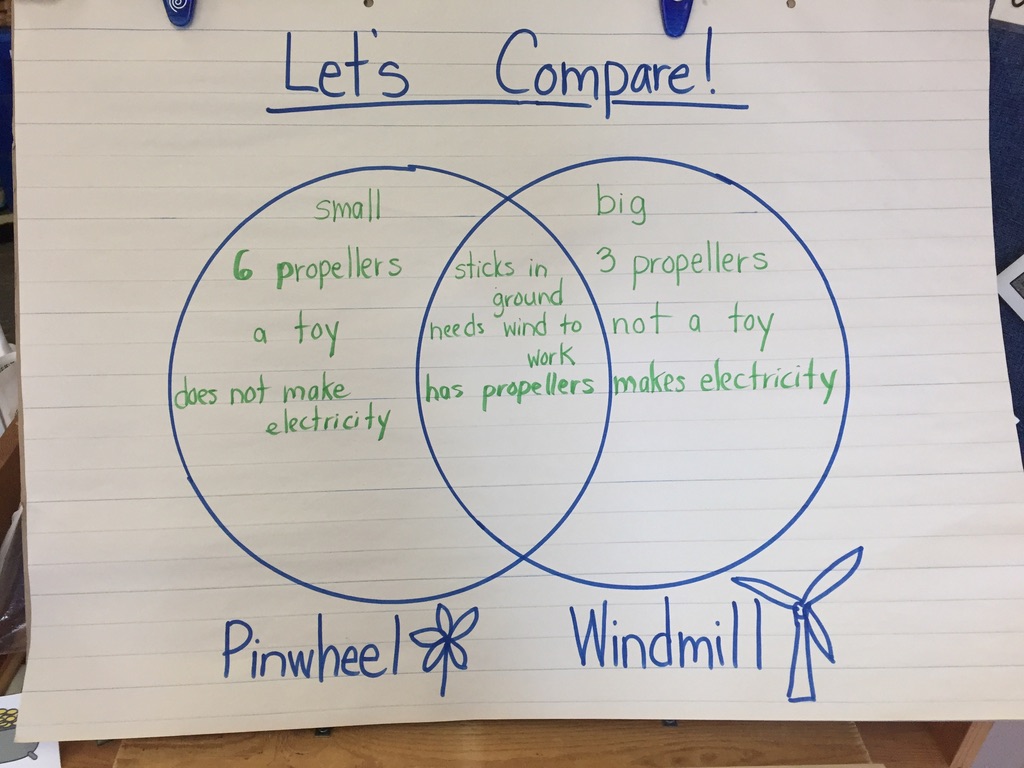
More Wonder Walks
As a result of our Wind Walk, the children have begun to notice and talk about the wind more than ever before. This is always my goal for each of the Wonder Walks we take – to raise children’s awareness and interest in the world around them!

You can read about more of our wonder walks here:
A Fall Nature Walk for Outdoor Learning
For more ideas on science and inquiry, visit the Growing with STEAM page inside the Roots & Wings Resource Library.



 The Envelope Project
The Envelope Project Growing Our Thinking Around Matter
Growing Our Thinking Around Matter Why I Use Choice Time Centers in my Kindergarten Classroom
Why I Use Choice Time Centers in my Kindergarten Classroom Science Center Activities That Your Kiddos Will Love
Science Center Activities That Your Kiddos Will Love
Awesome lesson! Thanks for sharing! 🙂